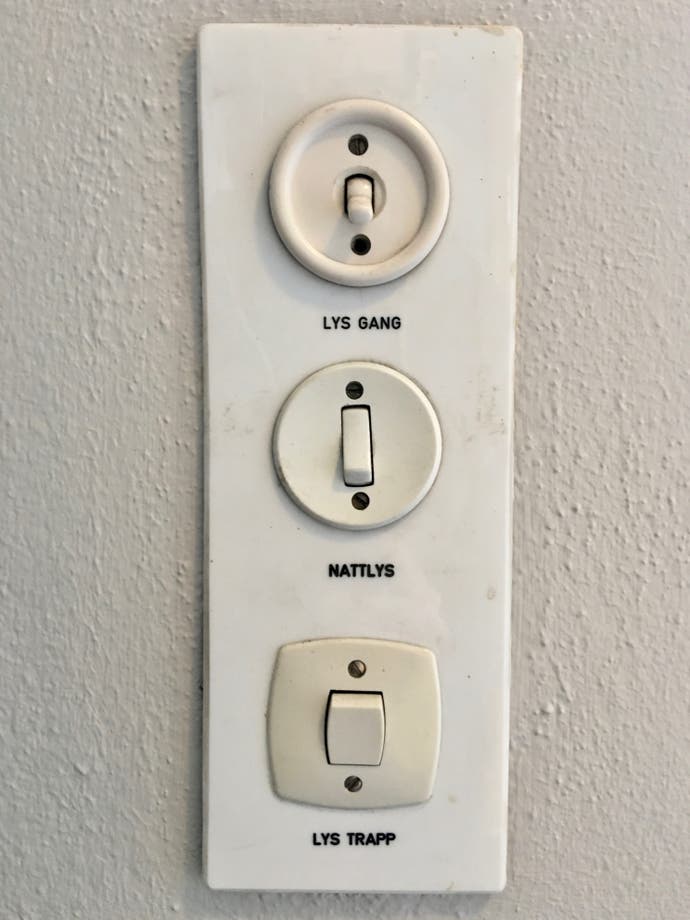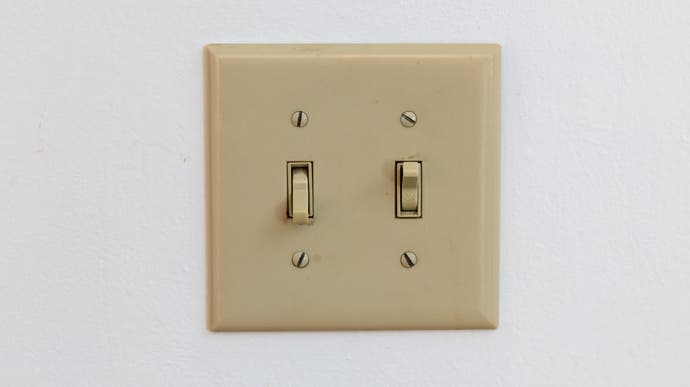Someone should make a game about: Light switches
When life gives you lumens.
Hello, and welcome to our series which picks out interesting things that we'd love someone to make a game about.
This isn't a chance for us to pretend we're game designers, more an opportunity to celebrate the range of subjects games can tackle and the sorts of things that seem filled with glorious gamey promise.
Check out our 'Someone should make a game about' archive for all our pieces so far.
My grandfather was an architect. He was Swiss, and lived and worked in Geneva. He built homes and public spaces in a clean, modernist style, with lots of glass. He also had a hand in renovating several buildings in Geneva's stately old town, including the Maison Tavel museum.
Anyway, my grandfather was fond of saying architects should pay special attention to two things. One was trees: he admired them as nature's great works of structural engineering, and loved the interplay between their free forms and humans' more organised buildings.
The other was light switches. Or, to be more complete, light switches, door handles and taps. These, he argued, were our primary points of physical contact with the buildings we live in, used dozens of times daily, so they should always be of good quality and pleasant to operate.

If this sounds weird to you, it might be because you're British. This country has a sadly impoverished light switch culture. Consider the standard-issue British light switch: a hard-edged, plain plastic square bearing a flat rectangular rocker with a stiff, harsh action. Ugh. Compare it, for example, with the standard American light switch, a little lever with a bit of travel to it, a lever that you actually throw, as if engaging a Tesla coil, firing up an old ham radio set, or operating railway points. Much more inspiring. Much more romantic.
My grandfather favoured a switch with a slightly concave rocker, the better to ergonomically receive a fingertip. This rocker was so perfectly balanced and lightly sprung that the gentlest brush would trigger its action, a noiseless but still immensely satisfying flick. He lived in an elegant old farmhouse in a leafy suburb of Geneva, and the light switches there were little period numbers: domes of polished brass bearing tiny little brass levers that fit snugly between your fingers as you flicked them. The real showstoppers, though, were in the stairwells, which had those lights that shut themselves off after a minute or so, so as not to waste electricity. These were operated with a circular push-button made of translucent plastic and lit from within by a soft orange glow, so you could find them in the dark. Hit the button and you'd hear a muffled THUNK as some ancient, sturdy electrical relay, somewhere in the guts of the building, slammed magnetically into place. A minute later, after you had ascended or descended the spiralling stairs, there would be another THUNK as the light turned itself off.
A house is a machine for living in. That's according to Le Corbusier, the great pioneer of modern architecture and urban planning, also a Swiss. To some people, this concept sounds heartless, like people are just commodities churned out by the factory of modern life. In my interpretation, your life is the product and the house is a tool that makes it: an object that serves us, reflects us and shapes us.
I've always thought architecture was the artform with the most in common with video games. It's a multidisciplinary, technical art primarily concerned with the creation of space for us to move around. Light switches - and door handles, and taps - are the machine's controls. They're inherently fun to operate and they change your perception of the space around you. What could be more video gamey than that?

